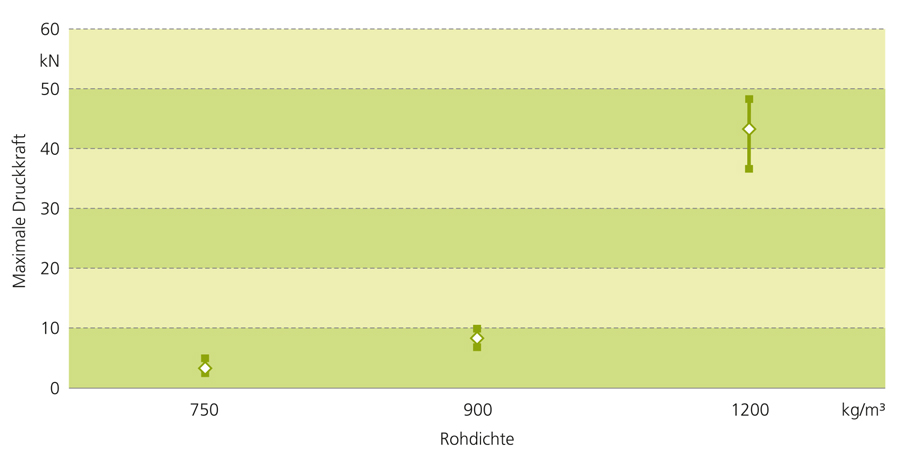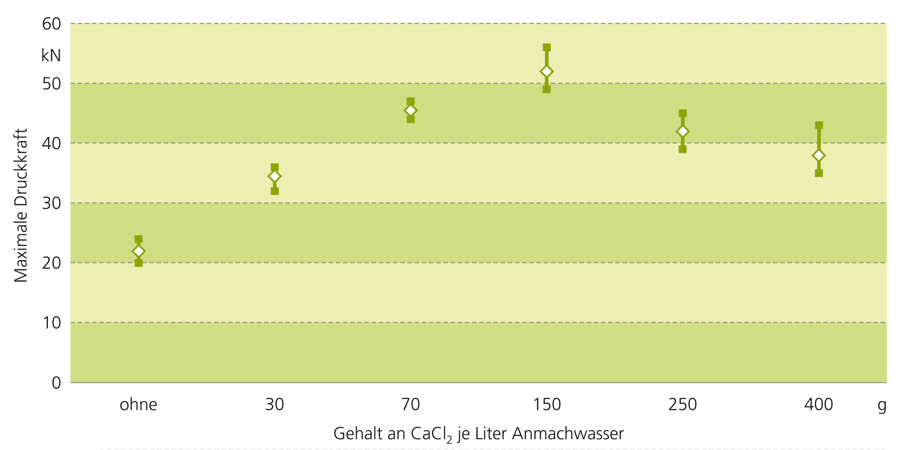Tests were therefore carried out
- using CaCl2 to accelerate the curing process,
- using hydrophobic agents to isolate the wood components and
- with pre-treatments to release the water-soluble wood components from the particles.
Whilst treatment with hydrophobic agents and dissolving through immersion in water brought little success, the addition of CaCl2 had a significant acceleration effect on the curing. Figure 2 shows the influence of CaCl2 on the early strength of the compressive strength, i.e. 24 hours after production of the samples. Dissolving away of the wood sugar through immersion in water proved to have little success in the tests performed here (Fig. 3). Figure 4 shows the problem of the adhesive strength of cement on the wood surface. On smooth surfaces, the cement dissolves without a significant fiber layer; with very rough surfaces, an interlocking of the cement and the wood apparently occurs, which results in a higher strength (Fig. 5).
The application of wood particles enables the production of lightweight concrete and individual characteristics, such as thermal conductivity, can be improved. The problems caused by the wood components and the related delay in curing can also be mastered through the addition of curing accelerators. The hygric properties and the durability following several hygrothermal load changes have not yet been investigated, nor have the possibilities for the utilization of reinforcements for increasing the tensile strength. Further research is needed here. However, the technical objectives of the project have been fully achieved and several demonstrators in the form of wall and ceiling elements have been manufactured which fully meet the application criteria.
Publication of the project results:
Entwicklung eines Leichtbetons mit Zuschlägen aus Buchenholz
Rüther, N.; Keilholz, M.; Wolf, M.; Yan, L.
Ibausil. 20. Internationale Baustofftagung, 12. bis 14. September 2018, Weimar, Deutschland.
Tagungsband 2, Seite 261-273
ISBN 978-3-00-059951-4
 Fraunhofer Institute for Wood Research
Fraunhofer Institute for Wood Research 




